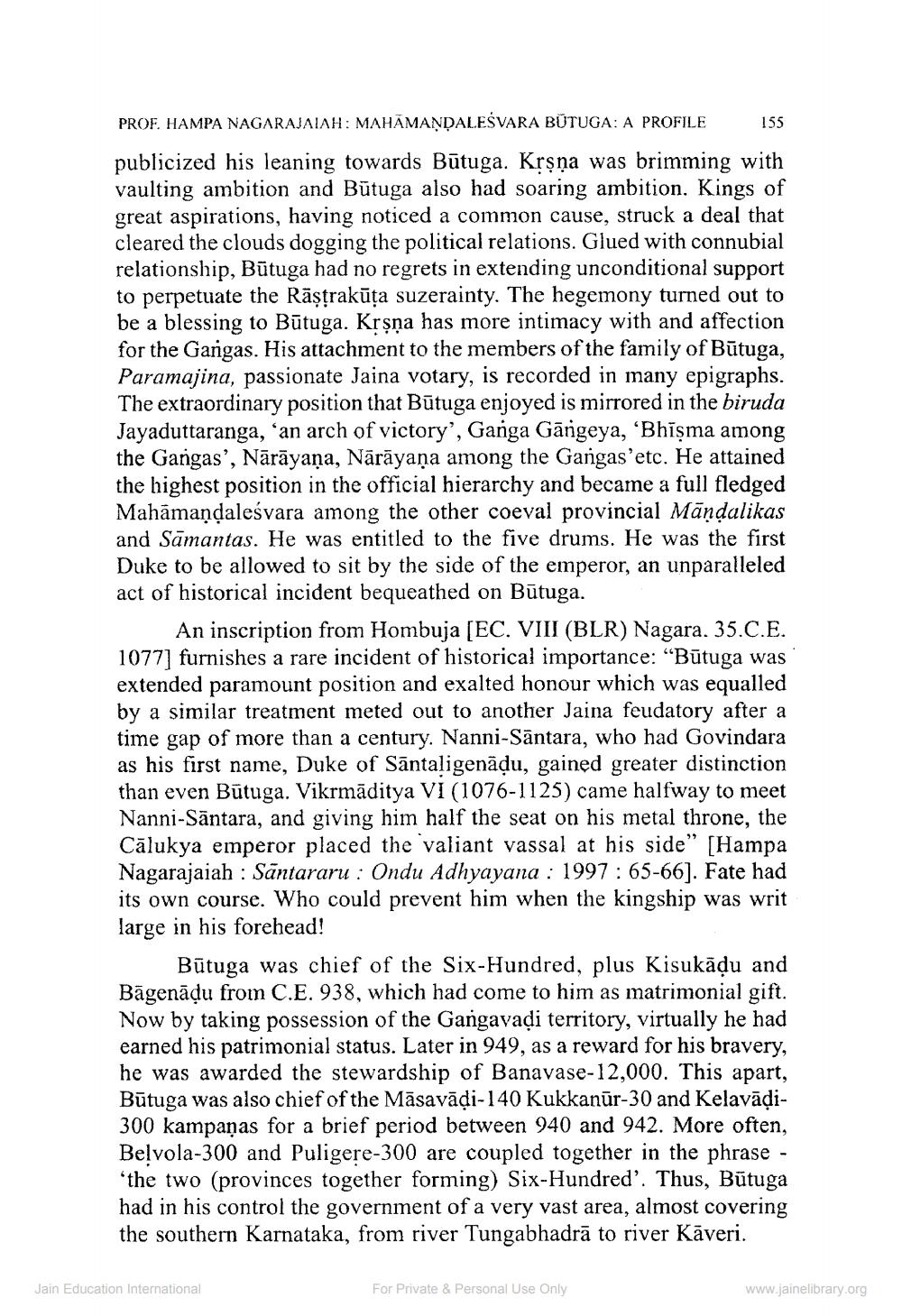________________
PROF. HAMPA NAGARAJATAH: MAHAMANDALESVARA BÜTUGA: A PROFILE 155 publicized his leaning towards Būtuga. Krsna was brimming with vaulting ambition and Bütuga also had soaring ambition. Kings of great aspirations, having noticed a common cause, struck a deal that cleared the clouds dogging the political relations. Glued with connubial relationship, Būtuga had no regrets in extending unconditional support to perpetuate the Rāstrakūta suzerainty. The hegemony turned out to be a blessing to Būtuga. Krsna has more intimacy with and affection for the Gangas. His attachment to the members of the family of Būtuga, Paramajina, passionate Jaina votary, is recorded in many epigraphs. The extraordinary position that Būtuga enjoyed is mirrored in the biruda Jayaduttaranga, 'an arch of victory', Ganga Gārgeya, 'Bhīşma among the Gangas', Nārāyaṇa, Nārāyaṇa among the Gangas'etc. He attained the highest position in the official hierarchy and became a full fledged Mahāmaņdaleśvara among the other coeval provincial Māndalikas and Samantas. He was entitled to the five drums. He was the first Duke to be allowed to sit by the side of the emperor, an unparalleled act of historical incident bequeathed on Būtuga.
An inscription from Hombuja (EC. VIII (BLR) Nagara. 35.C.E. 1077] furnishes a rare incident of historical importance: "Būtuga was extended paramount position and exalted honour which was equalled by a similar treatment meted out to another Jaina feudatory after a time gap of more than a century. Nanni-Sāntara, who had Govindara as his first name, Duke of Santaligenādu, gained greater distinction than even Būtuga. Vikrmāditya VI (1076-1125) came halfway to meet Nanni-Sāntara, and giving him half the seat on his metal throne, the Cālukya emperor placed the valiant vassal at his side” [Hampa Nagarajaiah : Santararu : Ondu Adhyayana : 1997 : 65-66). Fate had its own course. Who could prevent him when the kingship was writ large in his forehead!
Būtuga was chief of the Six-Hundred, plus Kisukādu and Bāgenādu from C.E. 938, which had come to him as matrimonial gift. Now by taking possession of the Gangavadi territory, virtually he had earned his patrimonial status. Later in 949, as a reward for his bravery, he was awarded the stewardship of Banavase-12,000. This apart, Būtuga was also chief of the Māsavādi-140 Kukkanūr-30 and Kelavādi300 kampaņas for a brief period between 940 and 942. More often, Belvola-300 and Puligere-300 are coupled together in the phrase -
the two (provinces together forming) Six-Hundred'. Thus, Būtuga had in his control the government of a very vast area, almost covering the southern Karnataka, from river Tungabhadrā to river Kāveri.
Jain Education International
For Private & Personal Use Only
www.jainelibrary.org




